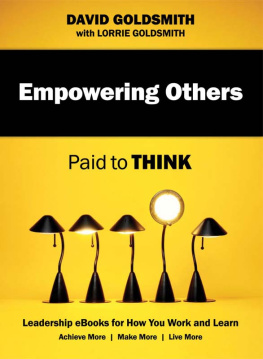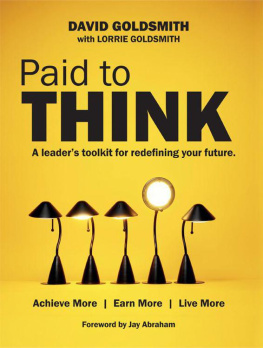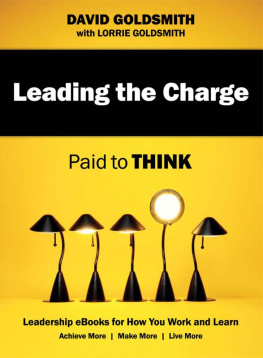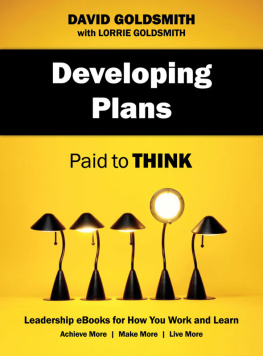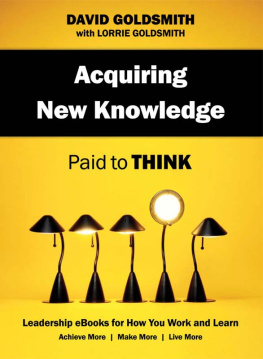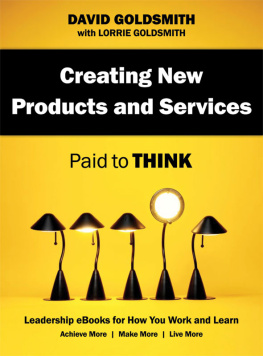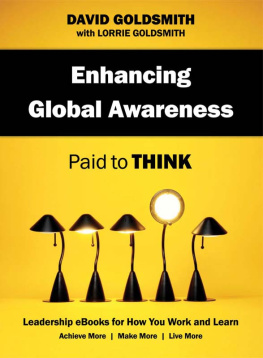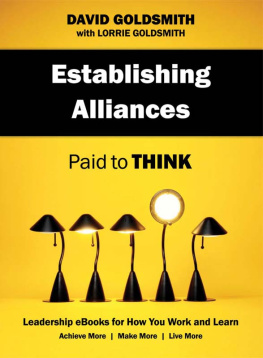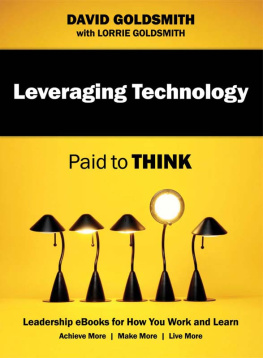
What you should know about your Paid to THINK Single
Here are a couple of tips you should know now about the Paid to THINK Single. The Paid to THINK Single is being offered to decision makers as an educational tool, designed from a long history of people seeking to use portions of content in their quests to do their jobs better. Over the years, countless leaders have received and utilized single chapters from Paid to THINK effectively to solve certain challenges and create opportunities, and now they are available to you, too.
Although each Paid to THINK Single stands on its own as a proven educational resource, be aware that within the content of certain Paid to THINK Single books, you may come across references to other Paid to THINK Singles or to the full edition of Paid to THINK. In these instances, you may want a full edition of Paid to THINK on hand to clarify terminology and concepts not fully described in this particular Paid to THINK Single.
Regardless, leaders and managers have used Paid to THINK Singles as cost-effective means of sharing information with other leaders and/or stakeholders. For instance, if you want to get six managers and 34 group members up to speed on a particular topic rapidly, you dont have to purchase 40 copies of Paid to THINK and ask everyone to read only one chapter within the larger book. Instead, you can economically teach your people by simply securing six copies of Paid to THINK for your leadership team and 34 copies of a Paid to THINK Single and achieve the same outcome!
Paid to THINK Singles offer additional value to people working in NGOs (non-governmental organizations), NPOs (non-profit organizations), and in emerging markets where the need for leadership information is great but where budgets may not be ample enough to cover pricey educational tools and methods. Luckily, Paid to THINK Single gives more people the opportunity to learn and develop..
Paid to THINK Singles make great gifts, and theyre convenient for those who dont want a full book. Whatever your purpose in choosing a Paid to THINK Single, youll find it to be an economical and easy way to learn.
This book is designed to provide accurate and authoritative information about business and leadership. Neither the author nor the publisher is engaged in rendering legal, accounting, or other professional services, by publishing this book. If any such assistance is required, the services of a qualified financial professional should be sought. The author and publisher will not be responsible for any liability, loss, or risk incurred as a result of the use and application of any information contained in this book.
This book contained single-subject material from the book Paid to THINK. Content within this Paid to THINK Single, therefore, does not necessarily cover all the terminology or descriptive material referenced within that pertains to the comprehensive resource Paid to THINK.
Copyright 2012 by David Goldsmith
All rights reserved. No part of this book may be used or reproduced in any manner whatsoever without written permission except in the case of brief quotations embodied in critical articles or reviews.

BenBella Books, Inc.
10300 N. Central Expressway, Suite 400
Dallas, TX 75231
www.benbellabooks.com
Printed in the United States of America
10 9 8 7 6 5 4 3 2 1
Library of Congress Cataloging-in-Publication Data is available for this title.
978-1-937856-53-3
Editing by Lorrie Goldsmith
Copyediting by Shannon Kelly
Proofreading by Cape Cod Compositors, Inc. and Rainbow Graphics
Indexing by Barbara Holloway, WordCo Indexing Services, Inc.
Cover design by Jelena Mirkovic
Text design and composition by Maria E. Mendez, Neuwirth & Associates, Inc.
Printed by Bang Printing
Distributed by Perseus Distribution
www.perseusdistribution.com
To place orders through Perseus Distribution:
Tel: 800-343-4499
Fax: 800-351-5073
E-mail:
CONTENTS
11
EMPOWERING OTHERS
IMAGINE THAT YOU ARE THE parent of a sixteen-year-old son who wants to learn to drive the family car. Picture yourself walking past your son as he plays basketball in your driveway with his friends. You toss to him the keys of the car and tell him that you have complete confidence in him and his ability to drive himself to school the next morning. Your logic is based on three facts: (1) he drove with you in the car for ten minutes last weekend and seemed focused, (2) hes a good student in school, so you know hes responsible, and (3) hes watched you drive him to school for the past several years, so its no big mystery what roads to take. (I think you know where Im going with this scenario.) When your son inadvertently miscalculates a turn and runs the car into a ditch, who are you going to blame? Him, for not knowing how to drive, or yourself, because you didnt properly empower him with the skills and education he needed to operate the vehicle safely?
Most people would never thrust a loved one into the drivers seat before adequately preparing them for the challenges ahead. Yet when it comes to their work environments, leaders put their people in the same kind of risky situation by handing over authority without having sufficiently established the 80% of the GPP, including well-thought-out plans, specific skills, tools, systems, processes, knowledge, and more to support their peoples success. But once you can see that the solution begins with youbecause leaders have the authority and means to build an environment that empowers others to reach Desired Outcomesyou will experience far fewer disappointments and enjoy many more successful results.
What I want you to get out of this chapter is that empowerment involves more than the handing over of projects and tasks to others, and once youre equipped with the right leadership tools to empower people properly, youll no longer have to rely on the ineffective default method of simply motivating people with encouragement what youll see referred to as hugging and kissing your people. There are definitely right ways and wrong ways of transferring authority and responsibilities to the people who help you achieve your Desired Outcome, and if you want better outcomes than youve gotten in the past, you can make an immediate change by using a tool that you will learn here called the ET Empowering Process. It doesnt have a fancy name, but it will improve your results and help you strike that balance between the extremes of letting go too much and of hovering to the point of suffocating progress. In addition to this tool, you will learn some tips that you can use to help others to help your organization be the best it can be.
Now that you have the first ten chapters under your belt, Im sure that youre increasingly seeing the interconnectivity of all the ET activities, so as you read through this chapter, try to do some Cyclonic Thinking of your own about how you can use some of the tools you have already learned in conjunction with the ones you learn here to give your people the 80% of the GPP that will foster their successes.
Empowering Others at 50,000 Feet
Every leader must rely on other people to manage some portion of their tactical activities, even if the leader operates within in a small organization and executes at times. So it makes sense that the better you equip executors with the tools they need to be successful, the better off your entire organization will be.
Next page
